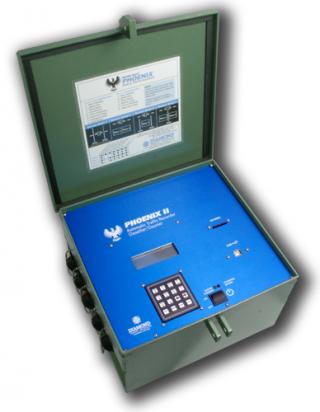Permanent Loop/Piezo Classifier
The Phoenix II is a multi-lane time interval counter/classifier designed for permanent installs or large portable applications.
The Phoenix is capable of 1 to 8 lanes count using axle sensors, 16 lanes count with loops, classification for 1-8 lanes of traffic with gap, headway and speed by axle type studies.
It can be fitted with 4 road tube sensors, 2 to 8 remote inputs, 4 to 16 presence inductive loop sensors and 4 to 8 piezo or resistive sensor inputs.
The versatility and robust stability of the phoenix lends itself the place of being the premier permanent site classifier. With a complete list of features, the Phoenix is fully programmable with the ability for incident detection, remote administration and monitoring for urban highway/interstate applications.
Low power consumption is another key feature allowing the Phoenix long life in the field. Remote sites are easily accomplished with the Phoenix as it can be powered permanently with solar panels.
The Phoenix can be programmed via a laptop, PC (direct or via modem / IP), by the counter keyboard/display.






